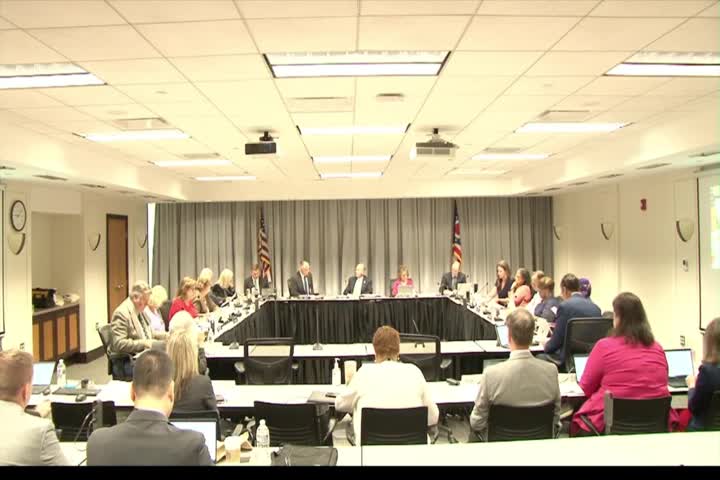Education Board Faces Budget Crisis Amid Funding Cuts
July 08, 2024 | State Board of Education, Executive Offices, Organizations, Executive , Ohio

This article was created by AI summarizing key points discussed. AI makes mistakes, so for full details and context, please refer to the video of the full meeting. Please report any errors so we can fix them. Report an error »

In a recent meeting of the State Board of Education, significant discussions centered around the financial implications of the transition from the Ohio Department of Education (ODE) to the newly established Department of Education and Workforce (DEW). The board reviewed a revised budget analysis, highlighting the challenges posed by the zeroing out of funding from House Bill 33, which has left the board reliant solely on the Teacher Licensure Fund for operational expenses.
The board reported a beginning balance of approximately $5.6 million for fiscal year 2024, with revenues exceeding projections by nearly $1 million, largely due to a robust five-year cohort of license renewals. However, the board anticipates a decline in revenue for fiscal year 2025, projecting around $2 million less than the current year, primarily due to a one-year extension granted for five-year licenses that were set to expire during the pandemic.
Expenditures have notably increased as costs previously covered by general revenue funds are now charged to the Teacher Licensure Fund. This shift has resulted in a significant rise in operational costs, including rent and IT expenses, which were integrated into the ODE budget prior to the split. The board emphasized that while expenditures have risen, they are not indicative of increased spending but rather a reallocation of existing costs.
The board also addressed the implications of the new wrap-around background check system mandated by House Bill 33, which, while broadly supported, presents additional financial burdens without corresponding funding from the legislature. The board expressed concerns over the sustainability of their budget, particularly as they navigate the cyclical nature of revenue collection, which peaks in the latter half of the fiscal year.
Overall, the board's financial outlook remains cautious, with a projected ending balance of approximately $3.5 million for fiscal year 2025, down from earlier estimates. The discussions underscored the need for strategic financial planning to ensure the board can maintain operations amid fluctuating revenues and increased expenditures.
The board reported a beginning balance of approximately $5.6 million for fiscal year 2024, with revenues exceeding projections by nearly $1 million, largely due to a robust five-year cohort of license renewals. However, the board anticipates a decline in revenue for fiscal year 2025, projecting around $2 million less than the current year, primarily due to a one-year extension granted for five-year licenses that were set to expire during the pandemic.
Expenditures have notably increased as costs previously covered by general revenue funds are now charged to the Teacher Licensure Fund. This shift has resulted in a significant rise in operational costs, including rent and IT expenses, which were integrated into the ODE budget prior to the split. The board emphasized that while expenditures have risen, they are not indicative of increased spending but rather a reallocation of existing costs.
The board also addressed the implications of the new wrap-around background check system mandated by House Bill 33, which, while broadly supported, presents additional financial burdens without corresponding funding from the legislature. The board expressed concerns over the sustainability of their budget, particularly as they navigate the cyclical nature of revenue collection, which peaks in the latter half of the fiscal year.
Overall, the board's financial outlook remains cautious, with a projected ending balance of approximately $3.5 million for fiscal year 2025, down from earlier estimates. The discussions underscored the need for strategic financial planning to ensure the board can maintain operations amid fluctuating revenues and increased expenditures.
View full meeting
This article is based on a recent meeting—watch the full video and explore the complete transcript for deeper insights into the discussion.
View full meeting
